Best
Durable Beginner Viola
Viola Outfit GOOD SOUND AND DURABLE
-
Overall: Hand-carved solid spruce top, and maple back, sides, and neck
-
Best Feature: Durable ebony fingerboard and pegs
-
TedScore™: 9/10
Best
Budget-Friendly Beginner Viola
Viola Outfit AFFORDABLE AND RELIABLE
-
Overall: Solid carved spruce top and carved maple back and sides
-
Best Feature: Comes with an inlaid purfling
-
TedScore™: 8/10
Best
Value-for-Money Beginner Viola
Viola Outfit A NEW STANDARD FOR AFFORDABLE INSTRUMENTS
-
Overall: Handcrafted from selected tonewoods
-
Best Feature: With a strong and durable fiberglass bow
-
TedScore™: 8/10
Are you ready for a string of fun and excitement?
In this post, we’re going to explore the world of the viola, a fantastic member of the string instrument family, and answer the age-old question:
How many strings does a viola have?
Well, the answer is four. And that’s the world’s quickest answer!
But there is more information that’s useful to you, if you continue reading…

Understanding the Viola
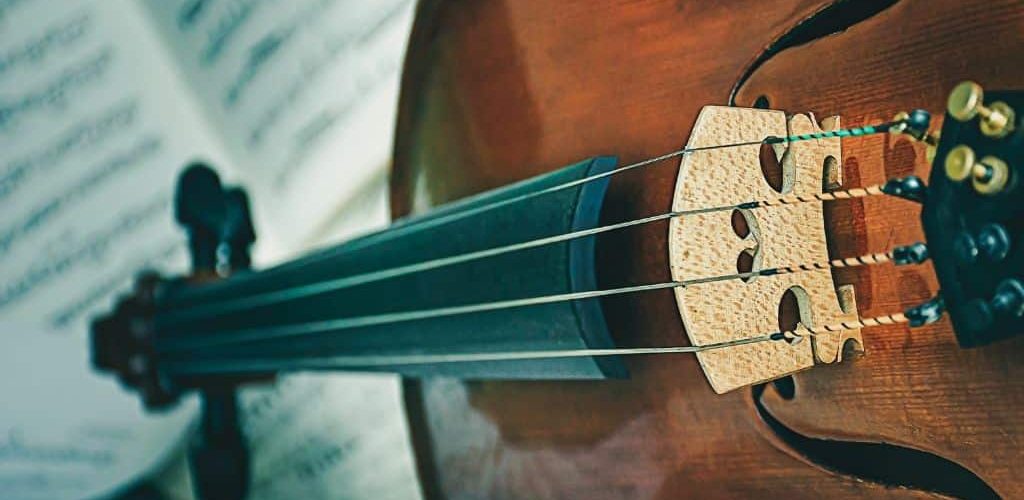
Traditionally, a viola has four strings, just like a violin. However, some musicians choose to use even thicker strings in five-string or six-string setups for various reasons.
The traditional four-string setup is the most common choice for violists. It offers a balanced and familiar sound, making finding compatible accessories and sheet music easier.
Like the violin, cello, and double bass, the viola is part of the string family. However, it has its own unique characteristics that set it apart from the others.
One of the most noticeable differences between the viola and the violin is its size. The viola is slightly larger than the violin, with a longer body and a wider fingerboard.
It’s also tuned differently, with four strings tuned a perfect fifth apart: C3, G3, D4, and A4. This tuning gives the viola a rich, mellow tone that is well-suited for playing harmony and accompaniment parts.
The viola requires a different playing technique than the violin.
If you’re interested in playing the viola, it’s important to find a qualified teacher who can help you learn the proper technique and approach to playing this unique instrument.
Brief History of Violas
The viola has a rich history dating back to the 16th century, when it was developed as a member of the viol family, which included the viola da gamba.
Over time, the viola evolved into its modern form and became an important part of classical music ensembles.
Viola players have made significant contributions to the development of music, and the instrument has been played by many notable musicians throughout history.
Viola bows have also undergone significant changes over time, with modern bows being made of materials like carbon fiber to improve performance and sound quality.
Anatomy of a Viola
Body of a Viola
The body of a viola is the largest part of the instrument and is typically made of maple and spruce.
The top of the viola is called the “belly” or “table,” while the back is called the “back plate.”
The sides of both the violin and viola are known as the “ribs.”
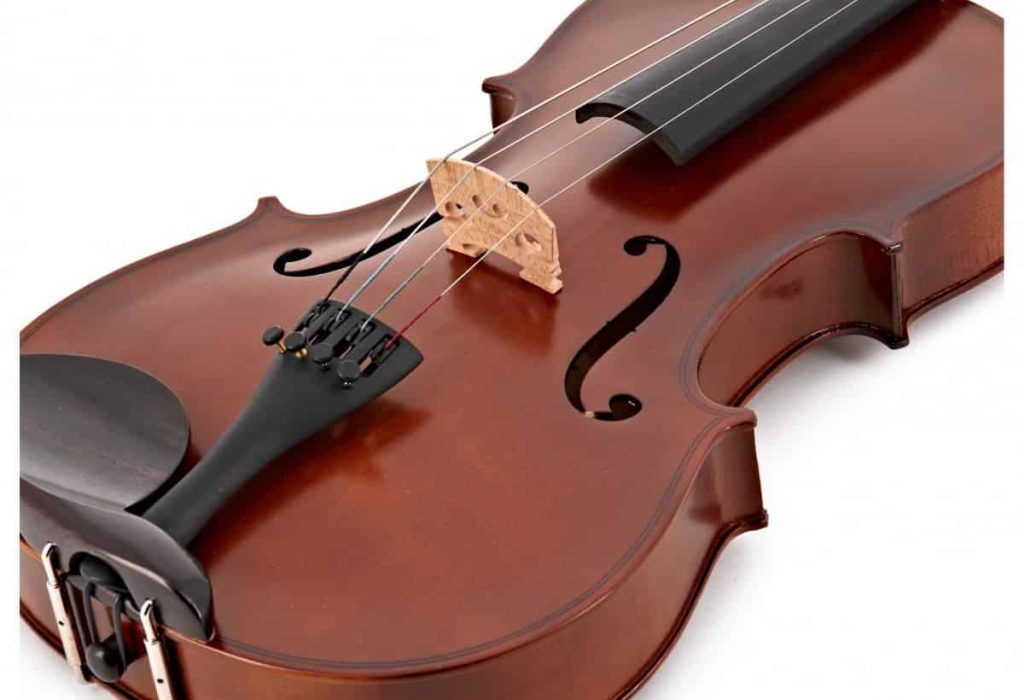
Neck and Fingerboard

The neck of the viola is attached to the body and is usually made of maple.
It’s topped with a fingerboard, which is typically made of ebony.
The fingerboard is where the musician presses down on the strings to create different notes.
Bridge and Strings
The viola’s bridge is a small, curved piece of wood that sits on top of the belly.
The strings are attached to the bridge, stretching over the fingerboard and up to the pegbox.
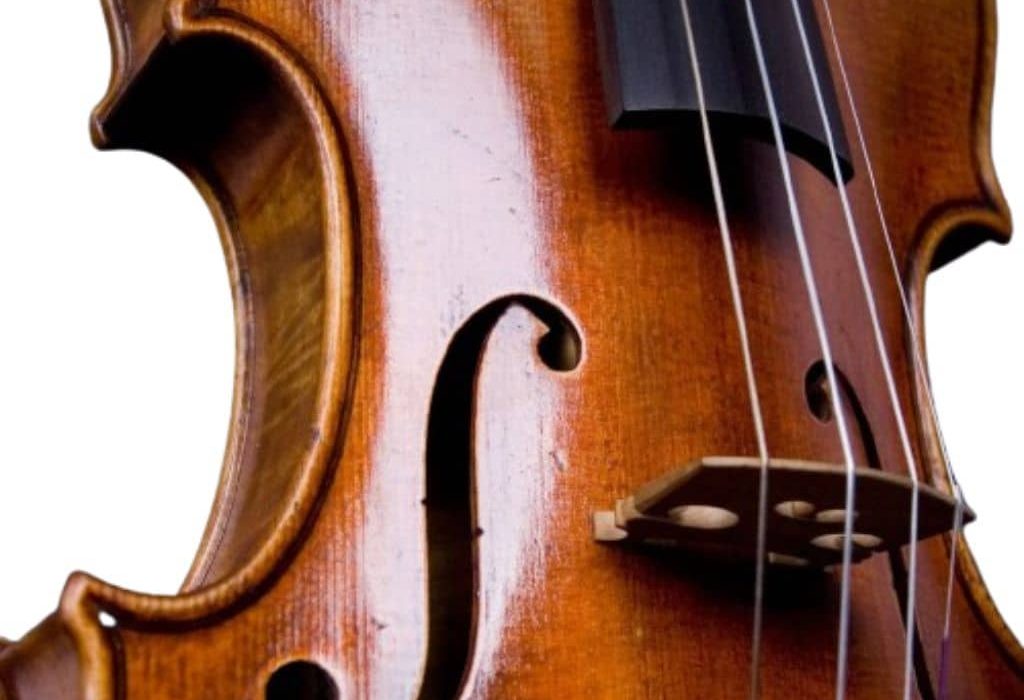
Strings of a Viola
Tuning and Range
A viola typically has four strings tuned to the notes C, G, D, and A.
The C string is the thickest and lowest-pitched string, while the A string is the thinnest and highest-pitched string. The range of a viola depends on the player’s skill level and the type of music they are playing.

Generally, the viola can play notes ranging from low C (two octaves below middle C) to high A (two octaves above middle C).
Viola strings are typically notated in alto clef, which is also known as the C clef. However, viola music can also be notated in treble clef, which is more commonly used for instruments like the violin and flute.
String Material
The material used to make viola strings can affect the sound and playability of the instrument.
Gut strings
Synthetic gut strings
Steel strings
Choosing the Right Number of Strings for You

When it comes to choosing a viola, one of the decisions you’ll need to make is how many strings you want your instrument to have.
While most violas have four strings, options are also available with five or six strings.
Factors to Consider
Playing style
The number of strings can affect the sound and range of your viola. A four-string viola may be sufficient if you’re primarily playing classical music.
However, if you’re interested in exploring more contemporary or experimental styles, a five or six-string viola can offer a wider range of notes and tonal possibilities.
Comfort and familiarity
Consider your experience level and comfort with different string configurations. If you’re used to playing a four-string viola and feel confident with it, sticking with it may be your best choice.
However, experimenting with additional strings can be exciting if you’re open to trying new techniques and expanding your musical horizons.
Budget
Considering the cost implications of choosing a viola with more strings is essential.
Additional viola strings are great and can increase the instrument’s price, so make sure it aligns with your budget and investment goals.
Our Recommended Viola for Beginners
Stentor Student 2 Viola Outfit
Stentor Student 2 Viola Outfit
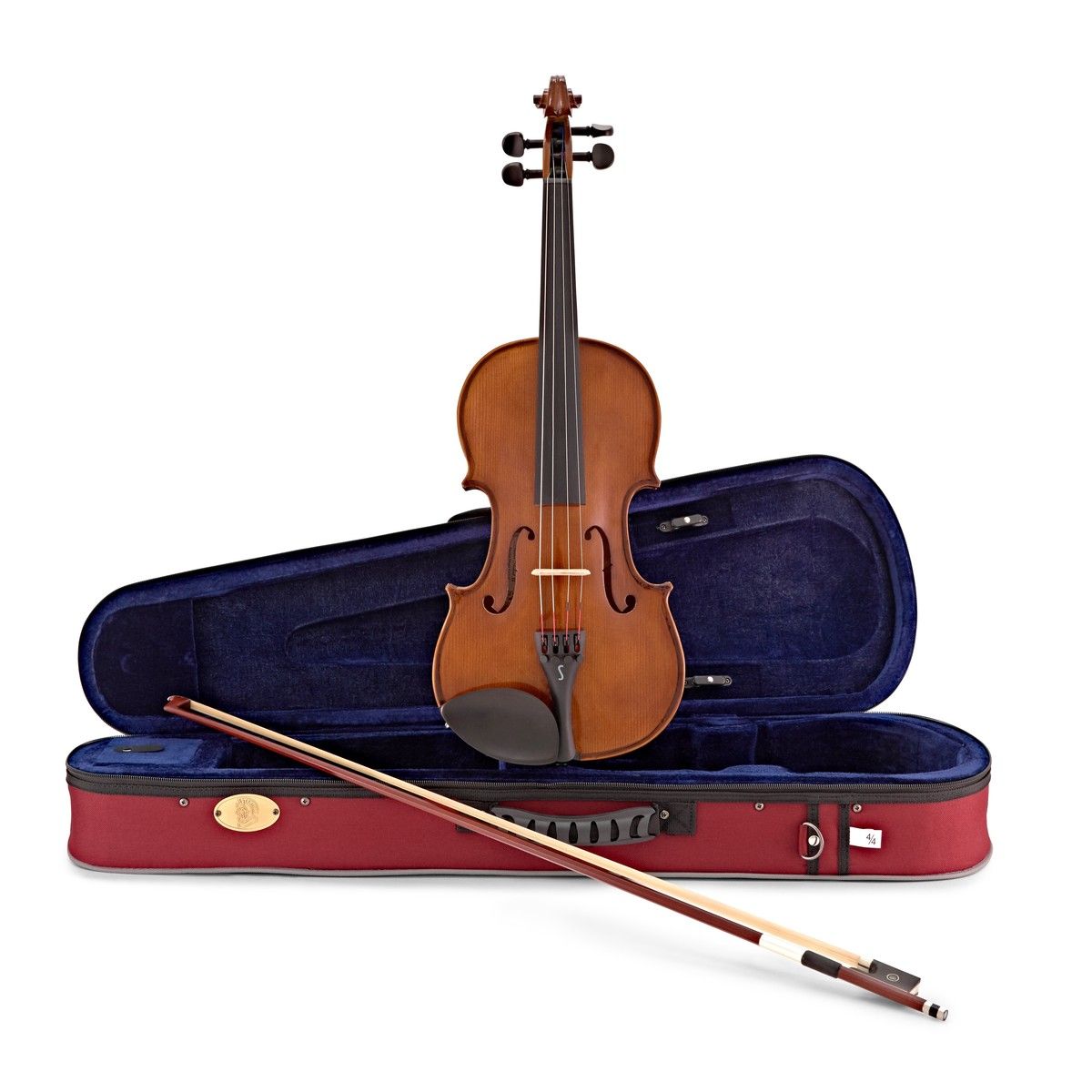
FEATURES: Made with a solid carved spruce top and carved maple back and sides
OTHER INFO: With ebony fingerboard and pegs
- Comes with an inlaid purfling
- Produces a warm, mellow tone
- Comes with a bow and case included in the outfit
- It may require additional setup and adjustments before playing at its best
When you click ‘Check Price’, you’ll see there are loads of great places to buy this item. Our personal favorite is Sweetwater for the US, and Thomann and Gear4Music for the UK & Europe.
They are the largest music retailers, with excellent customer service, competitive prices, really fast shipping, and the longest guarantees.
The professional musician who wrote this article combined many things,
from the product build, manufacturer’s reputation through to feedback
from other users, to create our famous TedScore™.
Cremona Sva100 Viola Outfit
Cremona SVA100 Viola Outfit
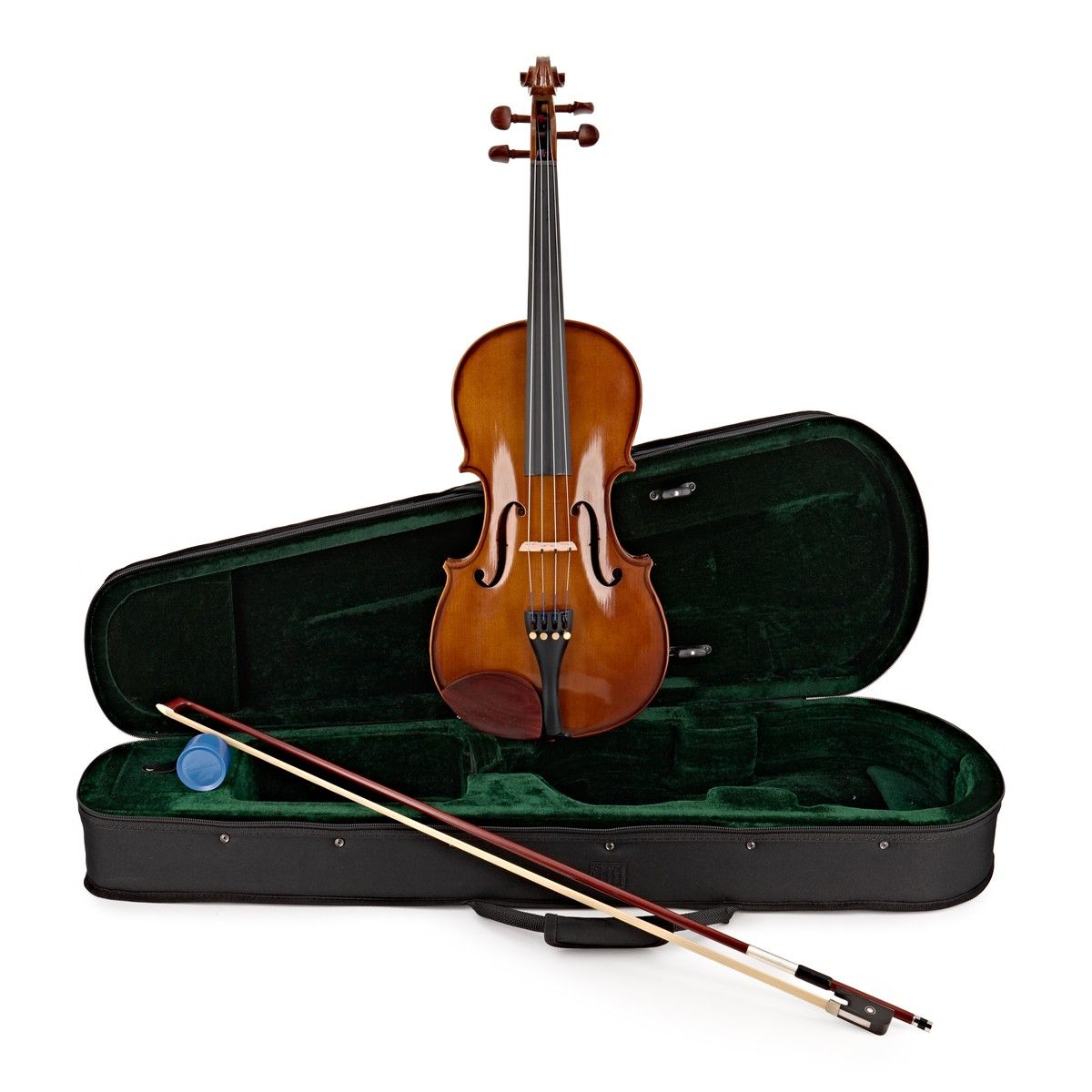
FEATURES: Hand-carved solid spruce top, and maple back, sides, and neck
OTHER INFO: Durable ebony fingerboard and pegs
- Excellent sound quality and projection
- Comes as a complete outfit with bow and case
- Higher price than other brands
When you click ‘Check Price’, you’ll see there are loads of great places to buy this item. Our personal favorite is Sweetwater for the US, and Thomann and Gear4Music for the UK & Europe.
They are the largest music retailers, with excellent customer service, competitive prices, really fast shipping, and the longest guarantees.
The professional musician who wrote this article combined many things,
from the product build, manufacturer’s reputation through to feedback
from other users, to create our famous TedScore™.
Hidersine Uno Viola Outfit
Hidersine Uno Viola Outfit
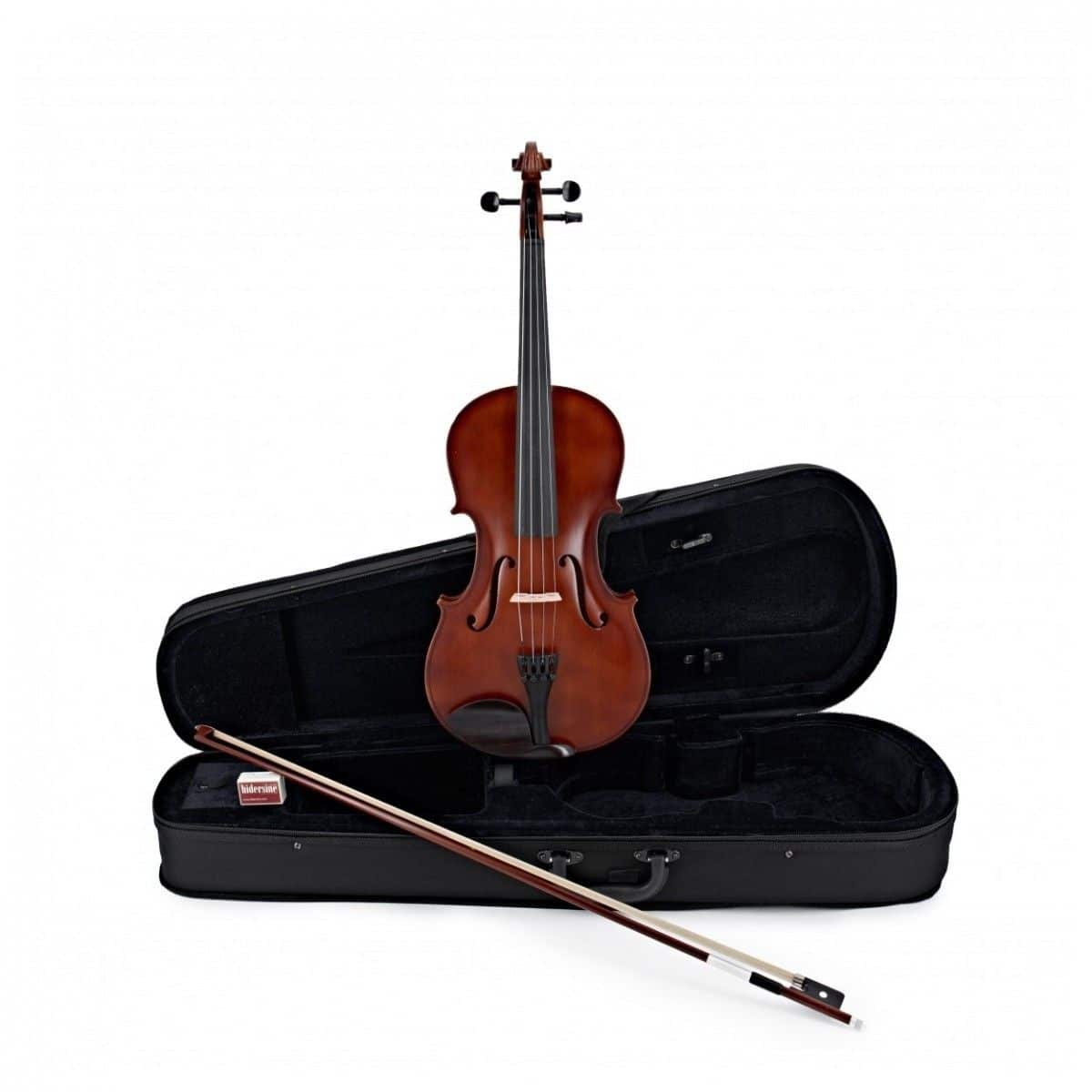
FEATURES: Handcrafted from selected tonewoods
OTHER INFO: Comes with a strong and durable fiberglass bow
- Includes a stylish and protective case for easy transportation and storage
- Excellent sound projection and tonal quality
- Suitable for beginners and intermediate players
- Comes with a viola bow, case, rosin
- Higher price than other brands
When you click ‘Check Price’, you’ll see there are loads of great places to buy this item. Our personal favorite is Sweetwater for the US, and Thomann and Gear4Music for the UK & Europe.
They are the largest music retailers, with excellent customer service, competitive prices, really fast shipping, and the longest guarantees.
The professional musician who wrote this article combined many things,
from the product build, manufacturer’s reputation through to feedback
from other users, to create our famous TedScore™.
How Many Strings Does A Viola Havee
Final Thoughts
The viola is a beautiful and versatile instrument with a unique sound that sets it apart from string instruments.
Whether you’re a seasoned musician or just starting out, the viola’s four strings offer a wide range of notes and tonal possibilities that will inspire and delight you.
And for those looking to explore new musical horizons, the rare five- and six-string setups offer even more opportunities for creativity and expression.
So, grab a viola and discover the creative and expressive sounds you can make!
Before you go…
Have you read our Beginner’s Guide to the Viola? If not, take a look now…
FAQ's
The violin is smaller and has a higher pitch than the viola, which is larger and has a lower pitch.
The viola adds depth and richness to the sound of a band or orchestra, filling in the middle range between the higher-pitched violins and the lower-pitched cellos and basses.
While there are some similarities in technique between the two instruments, there are also significant differences in playing position, bowing technique, and finger placement on the fretboard.
The viola strings are typically tuned to the notes C, G, D, and A. While violin strings are G, D, A, and E.
It depends on the individual player, but many find the violin easier to play due to its smaller size and lighter weight. In contrast, others may find the viola’s larger size and lower pitch more comfortable.
Yes, electric violas are a thing! They’re similar to electric violins and have pickups that allow them to be amplified and played through an amplifier or speaker system.
Electric violas are often used in contemporary music styles, such as rock and jazz, and can produce a wide range of sounds and effects.
While it’s possible to use a violin bow on a viola, it may not produce the optimal sound on the larger viola strings.
Violin bows are typically lighter and shorter than viola bows, which can affect the sound quality and playability on a viola.











man, violas are something else aren’t they? always thought they were just big violins but the tuning and range section really opened my eyes. never appreciated how different the sound could be cause of the string length and material. this makes me wanna try one out, see how it feels compared with a bass. thanks for shedding light on this, didn’t expect to be so intrigued.
This is exactly what I was looking for. I’m trying to find a good starter instrument for my daughter, and the ‘Our Recommended Viola for Beginners’ section is perfect. It’s great that you provide specific viola brands and models, making my decision so much easier. Thanks for the helpful advice, Mark Gibbs!
Do you know if these models are easy to maintain for beginners?
Same here! Just ordered the Stentor for my son.
Interesting stuff! Never knew how complex violas were compared to violins.
Hey Mark, got a quick q about the ‘Choosing the Right Number of Strings for You’ section — how does the number of strings affect the sound and playability for beginners? I’m just starting out and kinda overwhelmed by the choices. Thanks!
More strings can mean a wider range but also a steeper learning curve. Stick with 4 to start and grow from there!